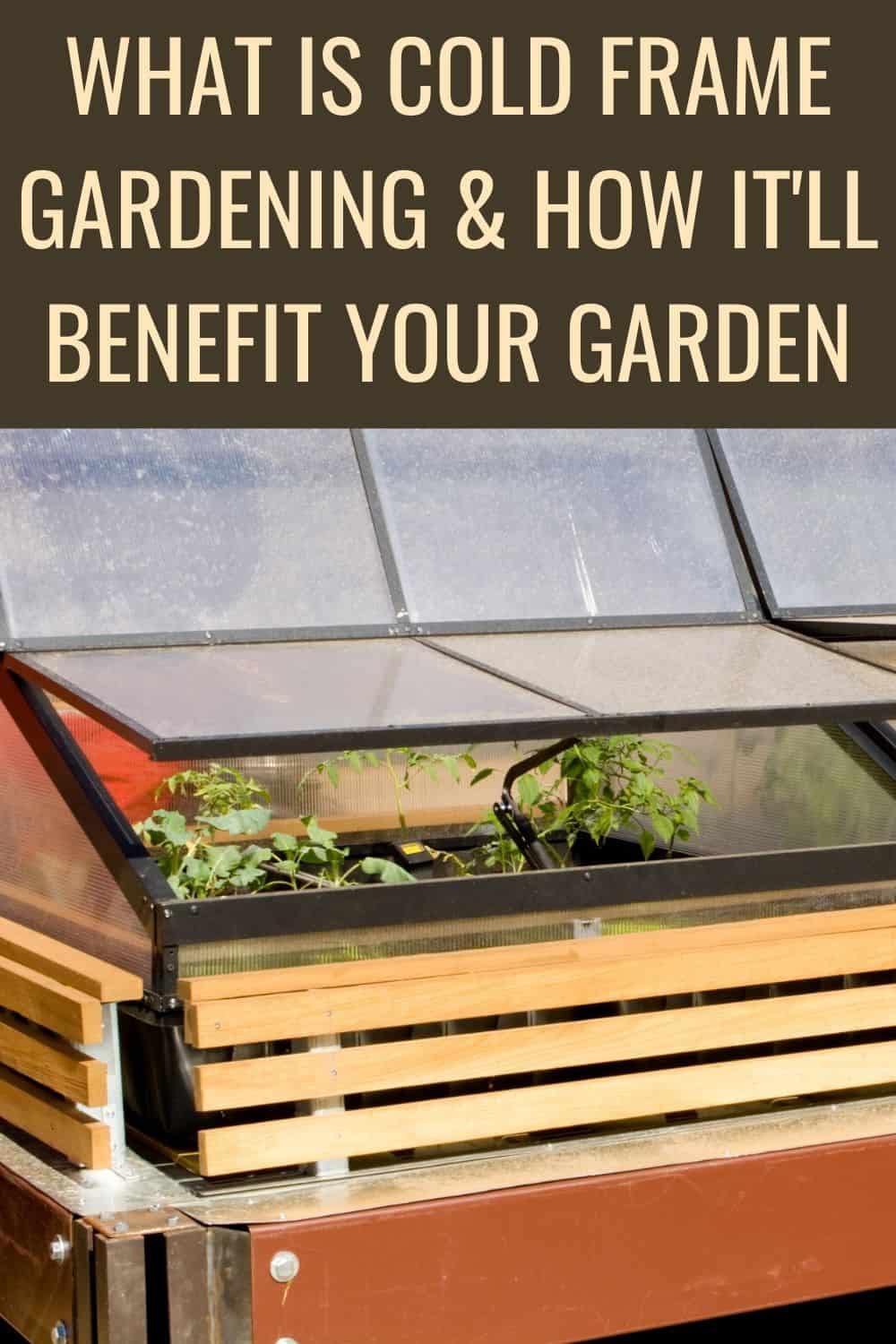Cold frame gardening, as well as poly-tunnels and greenhouses, are all great ways to extend the growing season. They also provide protection from harsh weather conditions such as frost or high winds. You can use these structures to get a head start on your vegetable garden by starting seeds early in the year. This way, you’ll have plenty of time for harvesting fresh produce throughout the summer months.
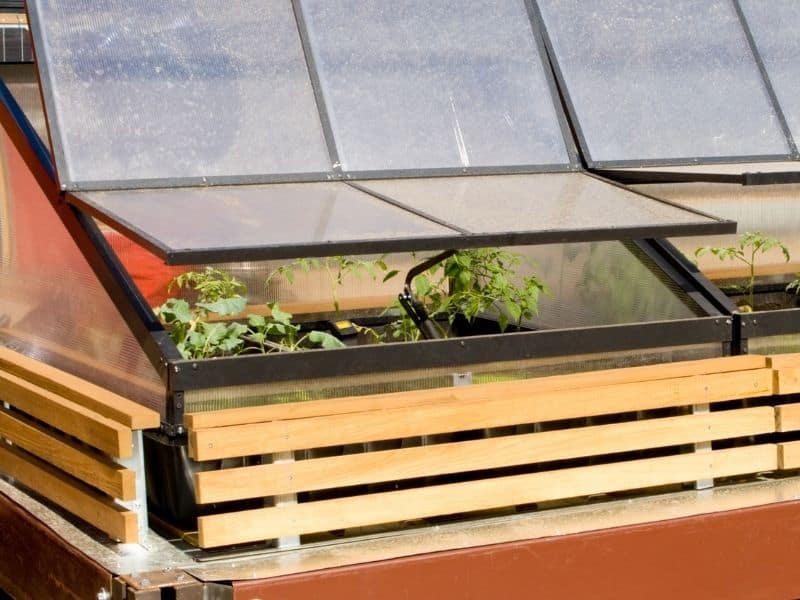
A cold frame or covered shelf unit would be ideal if you didn’t want to go to the expense of a poly-tunnel or greenhouse.
A south-facing window works well for sowing seeds but without somewhere to move on seedlings your sill will be full in no time. Even better, use a propagator to aid germination and then move on your healthy well-established seedlings to another protected area.
What Is Cold Frame Gardening And How It’ll Benefit You
What is a cold frame?
A simple south-facing frame with a glass lid sloping from a higher back to a lower front, and ideally hinged at the back so the lid can be lifted on a warm and sunny day.
Cold frames are a great way to extend the growing season and produce fresh vegetables, herbs, or flowers throughout the year. It’s also an ideal space for seedlings that need protection from frosty weather but don’t have enough room in your greenhouse yet!
Why use a cold frame?
By protecting your young plants you will have a much better success rate and will be able to start the season a few weeks earlier. A longer season will give your plants more time to develop before having to face the elements.
Here are 5 reasons to give cold framing a try:
- use it to start plants early in the season or extend your growing time
- start seeds and seedlings, and use it as a place of refuge from harsh weather conditions such as hail storms that would otherwise destroy unprotected crops outside on the open ground
- provide protection for your plants during frosty nights
- harden off plants before setting them in their final place in the garden: even a slightly chilly wind could destroy young sensitive plants
- protect young plants from pests like deer that might eat tender plants before you get a chance to put them in the soil
How to build your cold frame?
If you’re handy with DIY projects and want to save some money, building a cold frame from scratch would be right up your valley.
1. Gather the materials
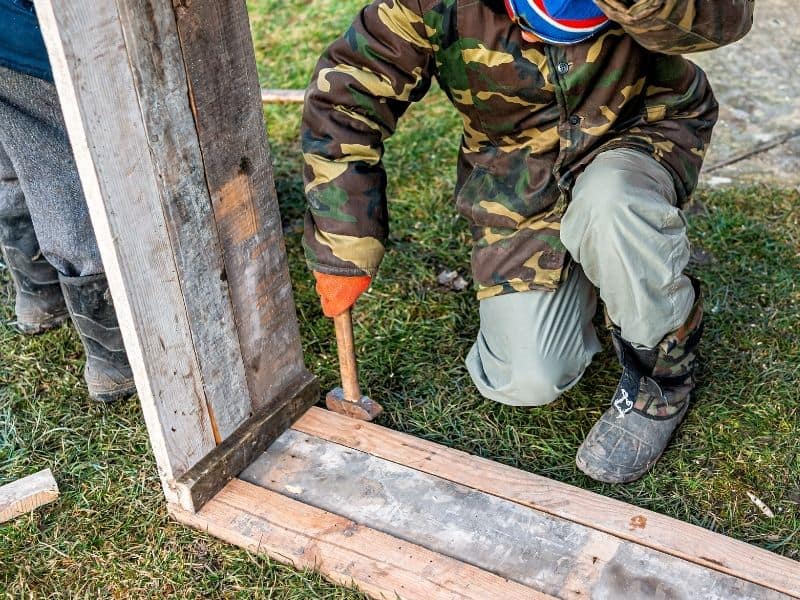
To build a cold frame, you need a few materials. Find (or build) a sturdy, rectangular box. It should be made of wood or metal and measure at least 12 inches deep by 24 to 36-inches wide (or wider), and 18” high with the back wall being taller than front walls for better insulation from cold air drafts coming in through bottom vents on colder nights when it is below freezing outside.
Add a top made from old windows or shower doors, and you are ready to plant.
On the other hand, if you’d rather get it done quickly, and don’t mind spending a bit of money, you can buy a cold frame kit from your local garden center or online from Amazon.
This Gardman 7650 Large Wooden Cold Frame made of FSC certified timber frame and twin wall polycarbonate construction is a good example of what you can buy. It is pre-assembled and ready to use, with vents on the sides for air circulation that are adjustable in height so they don’t let cold drafts come into your garden during colder nights when it’s below freezing outside (the back wall should be taller than the front walls).
2. Place potted plants inside the cold frame, or plant seeds directly in it
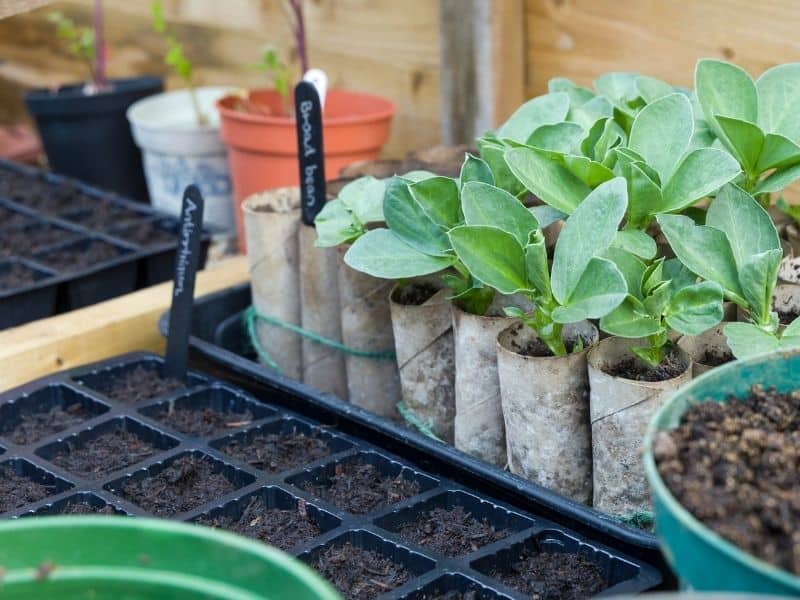
Once your cold frame is assembled and ready to plant, add some soil mixed with compost, and you’re ready to plant your seeds. Or, if you already have seedlings you want to harden off, add your pots right inside the cold frame.
Open up the top to let sunlight in during daytime hours
Cover up your box up at night if there’s frost forecasted by using plastic sheeting over top as extra insulation against cold weather, and leave everything open during the daytime if it’s a warm day so that the excess heat can escape and not kill your plants. Ventilation is important too!
3. Cold frame alternatives
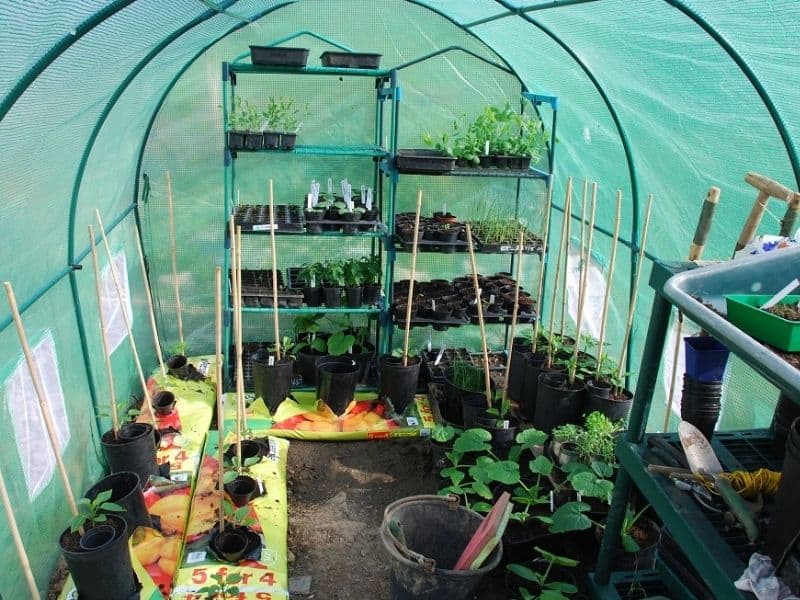
If you have no room for a cold frame you can buy an inexpensive grow house, a simple framed shelf unit with a plastic cover and door. They work well and can be heat regulated by opening the door on warm days, and they don’t take up too much room in the garden.
Both of these tools offer protection to young plants while they get used to outdoor conditions, a process called hardening off.
If you have space and you are keen to use a polytunnel or greenhouse you will really improve your yields. You can also begin a vegetable garden earlier in the season and could be eating salad all year round.
Plants like snow peas and potatoes will be ready very early, and to have a real treat of new potatoes in April is fantastic.
By using growing under glass, you’ll double the number of tomatoes and could even grow melons, sweet peppers, and chili.
Poly-tunnels are a good alternative and most garden centers sell a good variety of sizes.
Here are some more ideas to begin a vegetable garden as well as some great info on planning space in your vegetable plot.
Frequently asked questions about cold frames
What can you grow in a cold frame?
Not everything will do well in a cold frame, but some plants will really thrive. Salad greens, such as lettuce, arugula, spinach, beet greens, swiss chard, etc., are perfect for growing in a cold frame.
Other veggies that do well in cold frames are carrots, leeks, radishes, and turnips.
How do you keep a cold frame warm at night?
To raise the temperature inside a cold frame, consider adding a couple of 1-gallon water jugs you painted black.
These black jugs filled with water will absorb heat during the day and release it slowly throughout the night, raising the frame’s temperature.
Can you start seeds in a cold frame?
Cold frames are perfect for starting seeds because they can be used as mini-greenhouses.
